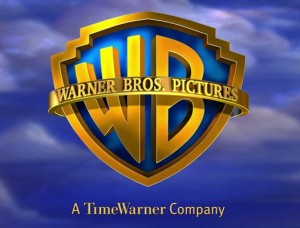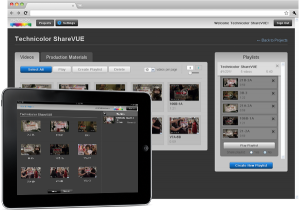
By
Rob ScottApril 17, 2011
Warner Brothers plans to release a new app by this summer code-named “Digital Everywhere.” The studio hopes the app will serve as the ultimate destination for purchasing all digital movies, not just those produced by Warner Bros. According to CNBC, “The way iTunes changed music, Warner Brothers wants to change movies.”
 Digital Everywhere is not a retailer like iTunes. It gathers the many ways a consumer can rent or purchase movies and organizes an individual’s library of movie titles and TV programs. It then provides access to this library from any Internet-connected device through the cloud authentication system known as UltraViolet.
Digital Everywhere is not a retailer like iTunes. It gathers the many ways a consumer can rent or purchase movies and organizes an individual’s library of movie titles and TV programs. It then provides access to this library from any Internet-connected device through the cloud authentication system known as UltraViolet.
The app does much more than serve as a content aggregator — and intends to increase the value of a digital movie purchase by including features such as: trailers, clips, reviews, related articles, data from IMDb and Box Office Mojo, release schedules, recommendations and Facebook integration. CNBC reports that Digital Everywhere, “brings DVDs, the movies on a hard drive, digital films from iTunes, Netflix queues, and eventually digital Amazon purchases, into one easily-sortable library.”
If the Warner Bros. app delivers all that it promises, and movie fans respond to the cloud integration approach, we could be on the cusp of experiencing a significant change in how we access and manage our digital media.

By
Rob ScottApril 15, 2011
The movie karaoke game, Yoostar 2 is designed to put players in scenes from their favorite movies and TV shows, enabling them to “perform” with professional actors. Users can then post the resulting video clips on the Yoostar web site, or social networking sites such as Facebook and Myspace. Yoostar 2 for the Xbox 360 Kinect and PlayStation Move was released last month.
 The connectivity between gaming and social networking could mark the first step toward an experiment that might soften the tension amongst developers in the two arenas.
The connectivity between gaming and social networking could mark the first step toward an experiment that might soften the tension amongst developers in the two arenas.
Scott Steinberg writes in a Mashable post: “You can seamlessly upload video performances online via PlayStation Network or Xbox Live right to social networks, where others can vote, bestow Internet fame and follow your antics. Using the service, it’s not only possible to share viral videos of you doing your best impression of Marlon Brando in ‘The Godfather’ via Facebook and Twitter. You can also earn rewards that unlock content in the disc-based console versions of the game.”
In an era where major game publishers tend to categorize social games into standalone experiences, Yoostar 2 may represent “one of the first efforts to bridge the gap between devices and platforms.”
Steinberg provides an interesting six-minute video report from the Yoostar offices in Santa Monica, California that includes interviews, demos and footage from the game, and of particular interest, the technology used to eliminate the need for green screen.

By
Rob ScottApril 15, 2011
Adobe previewed its new video streaming technology at NAB, built on the Adobe Flash Media Server. The new features and capabilities are designed to help stream protected video to mobile devices such as the Apple iPad and iPhone, Motorola Xoom, Samsung TVs and Atrix smartphone.
Last year Adobe introduced HTTP Dynamic Streaming (HDS) for the Flash Platform, which leverages the MPEG-4 fragment container format using H.264/AAC codecs. The company is now adding support for HTTP Live Streaming (HLS), an MPEG2 transport stream used by devices including the iPad 2. Adobe explains that HLS support within the Flash Media Server reduces “the publishing complexity for broadcasters who need to reach browsers supporting HLS through HTML5 (such as Safari) or devices where Adobe Flash is not installed.”
Adobe also demonstrated its next version of the Flash Media Live Encoder, that enables users to “capture a live broadcast stream and publish out to multiple devices including Android, Apple iOS and Samsung TVs.”
You can check out a seven-minute video demo on the Adobe blog.

By
Rob ScottApril 14, 2011
London-based Autonomy has created a new technology that turns static images into animated images. The prototype technology, Aurasma is targeted at powering apps for iPhone, Android, and related devices. Early demonstrations illustrate how users can aim a smartphone or tablet PC at an image from a magazine or product and convert those images into animation. Imagine the possibilities of turning a picture from a newspaper into a video — or pointing a device toward a product and launching a game with animated characters.
 Aurasma, according to CNET, “is capable of recognizing images and objects and enhancing them not just by replacing them with video but by allowing virtual objects to interact with real ones, such as a cartoon character walking through the door of a real building.” The technology could offer interesting possibilities for advertising applications, providing additional product information, creating virtual tours and much more.
Aurasma, according to CNET, “is capable of recognizing images and objects and enhancing them not just by replacing them with video but by allowing virtual objects to interact with real ones, such as a cartoon character walking through the door of a real building.” The technology could offer interesting possibilities for advertising applications, providing additional product information, creating virtual tours and much more.
The New York Times reports that Autonomy plans to release Aurasma as a free app as soon as next month. The article also suggests an unnamed movie studio will use the technology for an augmented reality game to accompany a new movie release.
For additional information, CNET has posted a 12-minute podcast interview with Autonomy CEO Mike Lynch. There is also a video demo available on YouTube.
By
Rob ScottApril 14, 2011
Businessweek reports that the entertainment studios lose more than $6 billion a year to movie piracy (according to a report by the Institute for Policy Innovation) — and that media piracy has become big business for organized crime. For example, the Los Zetas drug cartel of Mexico earns a reported $1.8 million a month through its “side” business of pirated music and DVDs. Some groups — including Los Zetas — even stamp their products with gang logos before distributing them to public markets.
The article cites an array of international drug smugglers and crime rings based in Russia, Mexico, China and Ireland that have made trafficking counterfeit entertainment media products a highly lucrative enterprise.
In an effort to address these international concerns, the MPAA is employing former law enforcement officers in Russia, Singapore, Britain, and Malaysia, to work with local police. The impact of piracy has been so severe in South Korea that “major studios have closed their regional home-entertainment offices because sales aren’t high enough to support the operations.”
The MPAA explains that some of these criminal elements have found significant success with online efforts, creating rogue websites that look so professional they’ve been bold enough to sell advertising on them. In these cases, pirated movies are streamed from the sites for free while the criminals earn revenue from the advertising. The MPAA is reportedly lobbying for passage of new U.S. legislation to combat such enterprises.

By
Rob ScottApril 13, 2011
Wired comments on the demise of the Flip camcorder and questions what could have been done to possibly revive Cisco’s $590 million investment in the no-frills digital video camera (Cisco purchased Flip-maker Pure Digital in March 2009). Wired reports that in the wake of company earnings falling 18 percent in the second quarter of 2011, Cisco will pull the plug on Flip.
 In related news, The Wall Street Journal reports Cisco CEO John Chambers has announced a strategic shift at the company that will involve stepping away from consumer-targeted brands and returning to a focus on corporate customers and service providers.
In related news, The Wall Street Journal reports Cisco CEO John Chambers has announced a strategic shift at the company that will involve stepping away from consumer-targeted brands and returning to a focus on corporate customers and service providers.
Flip cameras were all the rage in their heyday and spawned a number of similar products from the likes of Kodak and Sony geared toward consumers who wanted to shoot simple video and easily upload clips to the Internet. An unanticipated result of the camera’s portability and durability included uses such as capturing extreme sports footage and gathering b-roll for broadcast news. Affordable mounts for helmets and motorcycles soon emerged, as well as waterproof casings for recording underwater footage, increasing the line’s popularity. So what happened?
Wired suggests that once iPhones and Android phones started offering improved camera capabilities, including HD video recording, the Flip cameras started down a path of redundancy. Second, came the shift to real-time social networking — and without an Internet connection, Flip had trouble competing with other connected portable devices. Consumers began to expect immediacy in terms of media interaction and the ability to post their own content on-the-go.
A Wi-Fi or 3G connection may have been the first step in keeping the Flip alive, but in today’s market it would probably also need a touchscreen with apps to compete.
Related Story: David Pogue offers a different take on the camera line — “The Tragic Death of the Flip” (4/14/11)
UPDATE: Related press release — “Cisco Announces Streamlined Operating Model” (5/5/11)

By
Rob ScottApril 13, 2011
Rob Woodbridge of UNTETHER.tv hosts a three-person online video panel for Episode 12 of his site’s program, The Week in Mobile. The informal 56-minute discussion provides an interesting take on how mobility is shaping content consumption — with a focus on “The iPad Effect” and its rapidly developing impact on the PC industry.
The panel cites a recent Fast Company article in which analysts anticipate 35 of the 45 million tablets expected to sell in the upcoming year will be iPads and that the only way for others such as Dell, Motorola, Samsung and RIM to compete with Apple is to dramatically undercut the price — begging the question, “Is the tablet PC industry really an industry yet at all?”
Additionally, as PC makers are being adversely impacted by the growing success of the iPad — not only with tablet sales, but in regards to laptops and desktops sales — another result may be the surprising “stealthy” success of MacBook Airs (for which the panel credits the proliferation of apps). According to Fast Company, the Air grabbed 15 percent of of the total notebook sales for the last quarter of 2010.
The discussion also addresses mobile privacy abuse in a new era of apps and Amazon’s concern regarding the consumer power enabled by NFC wireless technologies.

By
Rob ScottApril 13, 2011
Computer scientist, technology pioneer and chief Internet evangelist at Google, Vint Cerf addresses the current state of innovation in the U.S. and what he sees as the necessary steps in moving forward.
 Cerf suggests our educational programs are deteriorating and that our culture places more emphasis on entertainment and sports figures than it does on scientists and engineers. To foster innovation, he sees a need to revitalize our K-12 educational system, create national recognition for scientific achievement, and devise an effective plan for attracting the best talent from abroad.
Cerf suggests our educational programs are deteriorating and that our culture places more emphasis on entertainment and sports figures than it does on scientists and engineers. To foster innovation, he sees a need to revitalize our K-12 educational system, create national recognition for scientific achievement, and devise an effective plan for attracting the best talent from abroad.
In his essay published in The Wall Street Journal this week, the Internet pioneer cites Japan, Spain, Norway and Sweden as examples of nations that “shine a much brighter national spotlight on international science and technology breakthroughs.”
In addition to a new national spotlight, Cerf promotes a hands-on educational approach that focuses on search and discovery rather than memorization of facts. He calls for increased interaction with groups such as the FIRST robotics program and Google’s Global Science Fair. According to Cerf: “By elevating interest in math and science, we will foster the innovation and ingenuity that will move this nation forward into a better future.”

By
Rob ScottApril 12, 2011
Sony unveiled its new F65 CineAlta digital motion picture camera at an NAB press conference in Las Vegas this week. The F65 camera features a 20.4 megapixel, Super 35mm CMOS sensor, a significant jump from the F35’s 12.4 megapixel 1080p CCD. Is this another step away from film as a motion picture medium?

Pictured on the left is Curtis Clark (ASC) who directed a 4K short with the new camera, that is being shown at NAB.
According to Engadget: “…this sensor is fast — not only can it capture up to 72fps on 4K, but it can also crank up to a smooth 120fps on 2K. As for those seeking to squeeze out every bit of detail from their clips, don’t worry: the F65’s got you covered with a 16-bit RAW output (19Gbps) at 4K resolution, or it can be compressed to 5Gbps for the convenience of recording onto the new SR-R4 portable 4K recorder. Looks like Sony’s finally found a candidate that’ll put a lid on film stock, but then again, at the end of the day it’ll depend on the price tag when it comes out in Q3 this year.”
Sony also announced 2 new professional 3D cameras at NAB (and for consumers, the company announced the 3D Handycam and 3D Bloggie cameras at January’s CES).
Read the Sony Blog report on the NAB unveiling: “Sony Kicks off NAB with the announcement of a new 4K professional camera” (4/11/11)
Related Engadget post: “Sony shoots out CineAlta F65 4K camera and PMW-TD300 3D camcorder at NAB” (4/11/11)
The Photography Bay write-up includes video coverage of the NAB press conference and behind-the-scenes footage with Curtis Clark directing a 4K short with the new camera.

By
Rob ScottApril 12, 2011
Pelican Imaging announced its prototype “array camera” for mobile devices that uses multiple lenses to record a single high-quality image. The company hopes this will appeal to manufacturers who want to make a slimmer smartphone, and to users interested in leveraging computational imaging (adding features such as the ability to alter focus after an image has been captured).
 The three-year old company has received $17 million in venture funding. Its technical advisory board includes Marc Levoy, who co-designed the Google book scanner and helped launch Google Street View; Shree Nayar of Columbia’s Computer Vision Laboratory; and Bedabrata Pain, who co-invented active pixel sensor technology for mobile phone cameras.
The three-year old company has received $17 million in venture funding. Its technical advisory board includes Marc Levoy, who co-designed the Google book scanner and helped launch Google Street View; Shree Nayar of Columbia’s Computer Vision Laboratory; and Bedabrata Pain, who co-invented active pixel sensor technology for mobile phone cameras.
“Pelican’s technology has the potential to upset the traditional tradeoff between the sensitivity and resolution of a camera and its thickness,” Levoy said, adding “Pelican’s solution is small, fast and inexpensive — which makes it a very exciting technology.” According to Nayar, the technology is a “paradigm shift in imaging and video” likely to “bring computational imaging applications to the mass market.”
Check out this Engadget post to see a video about observing a scene with multiple cameras through synthetic aperture photography.
Related CNET article: “Pelican shows slim phone-camera prototype” (2/9/11)
For more information, visit the Pelican press release.

By
Rob ScottApril 11, 2011
GoPro is gaining in consumer popularity thanks to its collection of Hero Camera mounts that allow users to attach inexpensive cameras to everything from ski helmets to the tips of surfboards for action footage. Already popular with skiers, snowboarders, surfers, bikers and other outdoor enthusiasts and extreme athletes, the GoPro line is starting to become more common with professional cameramen as well. Nature photographers, in particular, are using GoPro products to shoot footage of hard-to-reach places, such as inside a cobra’s den or a shark’s mouth.
 The small, six-ounce, 1080p camera comes with a water-tight housing and starts at $260.
The small, six-ounce, 1080p camera comes with a water-tight housing and starts at $260.
GoPro’s parent company, Woodman Labs Inc., is receiving funding from outside investors, including Steamboat Ventures, a venture capital fund backed by Disney (Steamboat Ventures was also an investor in Pure Digital, maker of the popular Flip pocket camcorder). Steamboat plans to help GoPro expand further into the professional market.
Gizmodo offers a positive review of the 3D Hero System — a $99 3D kit (cameras not included) that GoPro bills as “the world’s smallest 1080p 3D camera.” The system combines two HD cameras in a waterproof housing that enables users to shoot synchronized photos and video (2D and 3D) that can then be edited in 3D with the free CineForm Studio software.
Most helmet and similar cameras have gone to wide angle lenses to ensure footage and minimize shake. The result was effective, but made things look smaller when viewed. Gizmodo notes that “adding 3D gives depth to the trees and objects rushing past you,” providing for a more immersive viewing experience.
You can check out the GoPro video demo to see how the 3D Hero System works.
Related Wall Street Journal story: “Camcorder Popular With Surfers Looks to Ride Professional Market” (4/6/11)

By
Rob ScottApril 10, 2011
Technicolor announced its next-generation secure, cloud-based dailies solution for film and television studio clients. According to the press release, ShareVUE enables remote viewing, collaboration and sharing of dailies content on HTML5-supported web browsers, iOS and Android devices. Technicolor explains it is working with the Squeeze Solution Pack encoding technology from Sorenson Media to implement cloud-based scalability.
 ShareVUE features include:
ShareVUE features include:
— A central hub to remotely view production materials while sharing time-stamped comments and playlists.
— A single encode that is transcoded and optimized “behind-the-scenes” to maximize visual quality for each supported device.
— Streaming-only model ensures media security, and includes content protection protocols combined with link encryption protocols, content scrambling and dynamic watermarking techniques.
Related Variety article: “Technicolor, Canon pact for cinematographers” (4/5/11)

By
Rob ScottApril 10, 2011
According to the YouTube Blog, the popular video site has officially launched its beta version of YouTube Live — the possible next step in turning YouTube into a competitive TV streaming site. YouTube has live streamed concerts, sporting events and interviews in the past, but YouTube Live has the potential to be something much more significant that could grab the attention of broadcasters, advertisers and social media experts.
 The blog announcement explains: “With over 2 billion views a day, it’s easy to think about YouTube as a place to watch videos recorded in the past. But you’ve told us you want more — and that includes events taking place right now…”
The blog announcement explains: “With over 2 billion views a day, it’s easy to think about YouTube as a place to watch videos recorded in the past. But you’ve told us you want more — and that includes events taking place right now…”
Although the announcement does not include the special celebrity channels touted in the press of late or any mainstream content yet, it does describe some basic information such as a browse page of live and upcoming events, interaction with users’ customized pages for channel subscription alerts, and YouTube’s plans for a “gradual rollout” of the live streaming beta platform.
The potential success of YouTube partners streaming live from their own channels may largely depend on the amount and type of content, as well as the social interaction between users and fellow streamers. However, it is clear that with the YouTube Live platform in place, Google is setting the stage for bigger ticket items, such as “broadcasting” professional content and global news and events.
Related Digital Trends article: “YouTube Live debuts as its overhaul continues” (4/8/11)
Related Wall Street Journal article: “YouTube Recasts for New Viewers” (4/7/11)
By
Rob ScottApril 10, 2011
Michael White took over the reigns of DirecTV the beginning of this year as the new president and CEO. During a recent three-day retreat with senior executives, White outlined the company’s strengths and weaknesses, and shared his vision for future growth, especially in regards to possible expansion in Latin America and reaching out to customers who use mobile devices. Investor’s Business Daily reports that DirecTV “is the world’s largest pay TV services provider with more than 28 million subscribers in the U.S. and Latin America.”
White emphasized that DirecTV is in excellent shape, but that an effective strategic plan would help steer the company into the future. His immediate focus is on recent deals with AT&T and Verizon that allow DirecTV to sell broadband services over fiber networks, the next phase of DirecTV’s recently launched free iPad application, and expanding the number of customers in Latin America (currently at 9 million).
“I was convinced that Latin America was still the best growth opportunity, and we should really expand more aggressively in Latin America,” White said. “In the U.S., we had a terrific core business, but we needed to address the ‘anytime, anywhere’ TV evolution and we needed some other revenue growth opportunities to help drive the top line while we were wrestling with higher programming costs.”
DirecTV’s first iPad app has some interesting features, yet is somewhat limited in its functionality for those truly on-the-go. It can serve as a remote control to change channels, browse channels without interrupting what’s on TV at the time, record to a DVR, and create a home screen with access to favorite channels. Users can use the app outside the home to schedule programs, but cannot currently use it to view programming. This may be the biggest obstacle for mobile device enthusiasts. White explains that phase two will enable users to import DVR content that has already been recorded to the iPad for remote viewing.
White says that DirecTV’s strategy to increase market share in Latin America involves a segmented approach by focusing on the quality of HD and DVR offerings — in addition to offering lower-priced packages, specifically targeting the middle-class who have so far been reluctant to take the plunge with paid services.

By
Rob ScottApril 10, 2011
We recently reported that Time Warner Cable had drawn significant controversy over its free live-streaming app that provides subscribers access to streaming television content via their iPad (only in their homes). AP reports that Time Warner Cable has bowed to the subsequent pressure from Fox Cable Networks, Viacom and Discovery — and will drop 12 cable channels from the app (20 channels will remain and Time Warner Cable suggests it has plans to add more). The three programmers had complained that the app violated their programming contracts.
 “For the time being, we have decided to focus our iPad efforts on those enlightened programmers who understand the benefit and importance of allowing our subscribers — and their viewers — to watch their programming on any screen in their homes,” explained Time Warner Cable in a statement.
“For the time being, we have decided to focus our iPad efforts on those enlightened programmers who understand the benefit and importance of allowing our subscribers — and their viewers — to watch their programming on any screen in their homes,” explained Time Warner Cable in a statement.
Since the AP story hit the wires, Time Warner Cable and Viacom announced they are countersuing each other in U.S. District Court. This case may be an important indicator regarding the growing debate over content and licensing rights amidst an era of mobile devices.
Related Los Angeles Times article: “Time Warner Cable and Viacom sue over iPad app” (4/8/11)
Related Forbes article: “Viacom Yanks Channels From iPad App, Raises Stakes In Streaming Standoff” (4/8/11)
Related Broadcasting & Cable article: “TWC Clicks iPad App Channel Count up to 73” (4/25/11)
 Digital Everywhere is not a retailer like iTunes. It gathers the many ways a consumer can rent or purchase movies and organizes an individual’s library of movie titles and TV programs. It then provides access to this library from any Internet-connected device through the cloud authentication system known as UltraViolet.
Digital Everywhere is not a retailer like iTunes. It gathers the many ways a consumer can rent or purchase movies and organizes an individual’s library of movie titles and TV programs. It then provides access to this library from any Internet-connected device through the cloud authentication system known as UltraViolet.





















